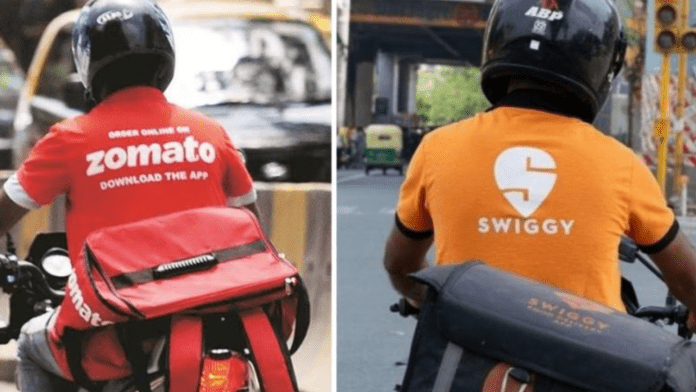According to a report from UBS Securities, the food delivery market in India is anticipated to have recorded a 10% sequential growth in the quarter ending on September 30. This news provides a significant boost to Zomato and Swiggy, who dominate this segment, especially considering the traditionally slow nature of this quarter.
UBS projected that Zomato experienced a month-on-month volume growth of 2% in July and 4% in August. However, this falls short of Swiggy’s volume growth, which stood at 7% and 6% for the same months, as per UBS’s analysis.
“If we extrapolate July and August data to September, we are seeing a 10% QoQ (quarter-on-quarter) growth in July-September, which could be a positive surprise to the market, given Q2 is seasonally weak (adverse monsoon-related seasonality and lack of IPL). We model Q2FY24 gross order value (GOV) growth for Zomato to grow 7% QoQ, which is better than the company’s own guidance and consensus estimates,” it said.
In the analysts’ call that took place after Zomato’s June-quarter results, the Chief Financial Officer, Akshant Goyal, had outlined the company’s goal of achieving a 25-30% growth in both the current year and the next. Zomato had previously disclosed an 11% quarter-on-quarter growth in Gross Order Value (GOV) for food delivery in the April-June period. Notably, this quarter also marked Zomato’s first-ever quarterly profit of INR 2 crore.
The UBS report also highlighted that Zomato experienced a sluggish six-month period ending on December 31, 2022, due to a slowdown in the market following the Covid-19 pandemic and a loss of market share to Swiggy.
“This, in turn, can primarily be attributed to the suspension of Zomato Gold loyalty programme and heightened focus on profitability which resulted in lower discounts (as a percentage of average order value (AOV)) and higher delivery fee passed to customers. Based on data in January-June 2023, Zomato has regained the bulk of the lost market share since the relaunch of its loyalty programme,” the report said.
In its earnings report for the June quarter, Zomato announced that the increasing popularity of its Gold loyalty program led to more frequent orders, accounting for more than 30% of its Gross Order Value (GOV) in the food delivery segment.
On Swiggy, the UBS research note said, “The data also shows a modest spike in discounts from Swiggy (up around 120 basis points over July and August) and reduction in delivery fees (down around 70 basis points over July and August), which could be Swiggy’s response to market share losses in the prior six months”.
In the year 2022, Swiggy’s losses surged by 80% compared to the previous year, reaching approximately $540 million, as reported by its investor, Prosus, in June. The Bengaluru-based company’s Gross Merchandise Value (GMV) for food delivery increased by 26% year-on-year, as stated by Prosus, the Dutch-listed subsidiary of South African technology investor Naspers.
According to the report, the delivery fees collected from consumers in India by food delivery platforms were considerably lower compared to other markets. In India, these apps levied delivery fees at the rate of 5-7% of Gross Merchandise Value (GMV), whereas in other markets, the fees ranged from 10-15%. The relatively lower delivery charges in India indicate the potential for an increase in these fees over the medium term.
“While this is not an immediate focus (as platforms emphasise market expansion), the recent introduction of INR 2-3 platform fee per order in effect allows platforms to monetise consumers. This is particularly noteworthy as almost a third of GMV is now coming from subscription programmes where consumers receive free or discounted deliveries,” it said.
Reports indicate that consumer-centric internet platforms like Uber, BigBasket’s swift commerce division BB Now, and Zepto are charging a per-order or per-booking fee as a step towards enhancing their unit economics.
According to the UBS report, these fees imposed by food delivery platforms on customers are essentially a source of increased revenue and contribute to improved unit economics. The report highlighted that Zomato’s introduction of the platform fee could directly result in a 70 basis point increase in its Earnings Before Interest, Taxes, Depreciation, and Amortization (EBITDA) margin as a percentage of Gross Merchandise Value (GMV).
“While the immediate priority is to drive growth, the experience of mature markets shows consumers may be willing to pay more for delivery fees over time. Indeed, the recent introduction of Rs 2 platform fee by Zomato and Swiggy (without any visible impact on demand) demonstrates that consumers are broadly agnostic to marginal increases in costs. More importantly though, despite the delivery fee being flat as a % of AOV for Zomato (5-6% of AOV since FY20), contribution margin has improved from -11% to 5%, showing the flexibility on other revenue or cost levers,” it added.





